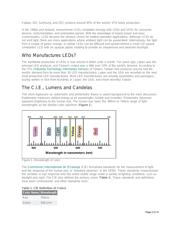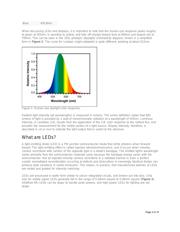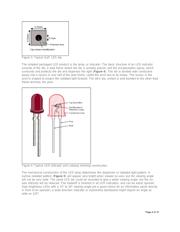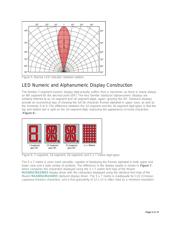Datasheet 搜索 > LED驱动器 > Maxim Integrated(美信) > MAX6957AAI+ 数据手册 > MAX6957AAI+ 其他数据使用手册 1/15 页
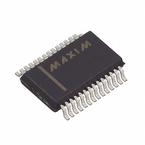
 器件3D模型
器件3D模型¥ 41.068
MAX6957AAI+ 其他数据使用手册 - Maxim Integrated(美信)
制造商:
Maxim Integrated(美信)
分类:
LED驱动器
封装:
SSOP-28
描述:
MAXIM INTEGRATED PRODUCTS MAX6957AAI+ 芯片, 发光二极管驱动器
Pictures:
3D模型
符号图
焊盘图
引脚图
产品图
页面导航:
应用领域在P11P12
导航目录
MAX6957AAI+数据手册
Page:
of 15 Go
若手册格式错乱,请下载阅览PDF原文件

Maxim > Design Support > Technical Documents > Tutorials > Automotive > APP 1883
Keywords: LED, PDP, plasma display panels, OLED, Organic LEDs, PLED, Polymer LEDs, LCD, TFT,
VFD, vacuum fluorescent displays, Nixie, Lumens, Candelas, CIE, CRT, GaAsP, GaP
TUTORIAL 1883
LEDs Are Still Popular (and Improving) after All
These Years
Feb 25, 2003
Abstract: This article reviews LED display technology that has rapidly changed over its 35 years. The
origins of LEDs and their traditional applications are discussed. Some new applications for the improved
technology are presented.
Introduction
In recent years, countless articles have focused on new display technologies. Typical topics have
covered: the explosion of TFT color LCD panels with ever-increasing size into laptops and flat-screen
monitors; PDP (plasma display panels) for high-definition TV CRT replacement; polymer LED (PLED) or
organic LED (OLED) displays for the small color displays in games, cell phones, and PDAs.
This article discusses a 35-year-old display technology that itself has rapidly changed—the LED. This
overview covers the origins of LEDs, their traditional applications, and how improvements in the
technology have stimulated new applications.
A Brief History of LEDs
Commercial research into LED technology started in 1962, notably at Bell Labs, Hewlett-Packard®
(HP®), IBM®, Monsanto®, and RCA®. Work on gallium arsenide phosphide (GaAsP) led HP and
Monsanto to introduce the first commercial 655nm red LEDs in 1968. In 1971 HP released the 5300A
500MHz portable frequency counter using a GaAsP LED display. LED displays flourished in the early
1970s as numeric displays in pocket calculators. For a short time, LEDs appeared in digital watches, but
were soon replaced by LCDs. Meanwhile, LEDs replaced incandescent and neon lamps as status
indicators, and became the standard numeric and alphanumeric display choice for instrumentation.
In the 1970s and 1980s the LED's hottest competition for consumer goods came from vacuum
fluorescent displays (VFDs), whose bright blue-green display offered high intensity and high contrast
when viewed through a green or blue filter. VFDs were first developed by ISE Electronic Corporation in
1967. ISE, often known by the division name of Noritake®, together with Futaba® and NEC®, offered
display tubes from the late 1960s and early 1970s, starting with simple single-digit displays used in the
rapidly growing desktop-calculator market. Multidigit display tubes appeared soon thereafter, reducing
manufacturing cost. These tubes are possibly best remembered for their appearance in the popular
Casio® pocket calculators. Later, Samsung™ started making tubes for their own consumption for use in
consumer goods. In 1993, NEC sold their complete manufacturing line to ZEC in China. Today NEC,
Page 1 of 15
器件 Datasheet 文档搜索
AiEMA 数据库涵盖高达 72,405,303 个元件的数据手册,每天更新 5,000 多个 PDF 文件

